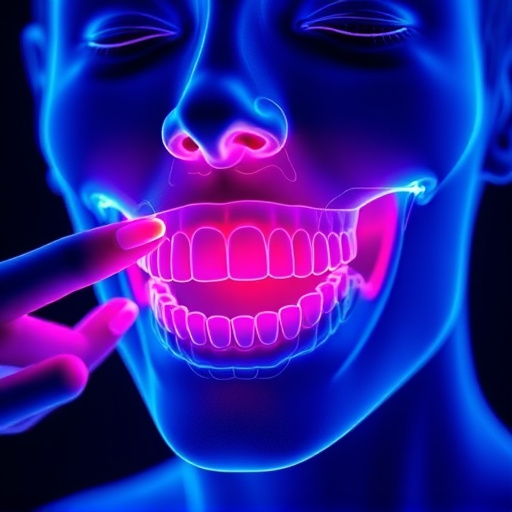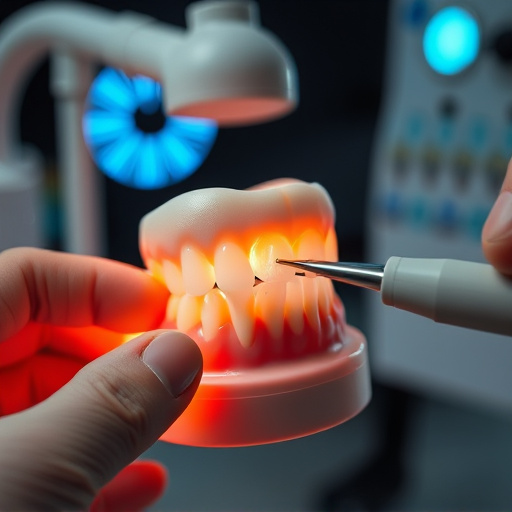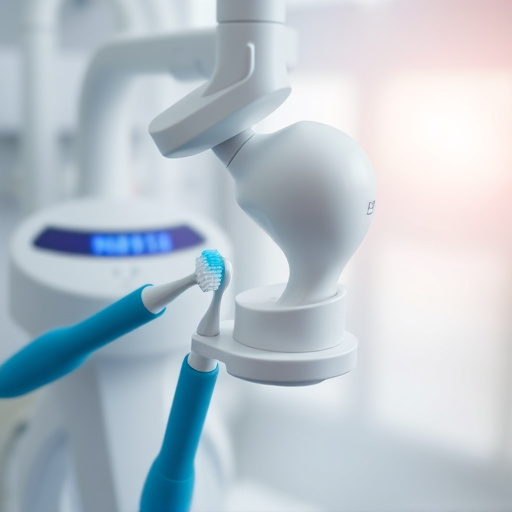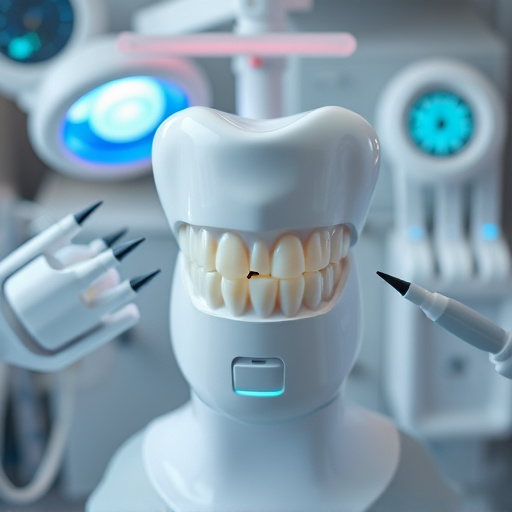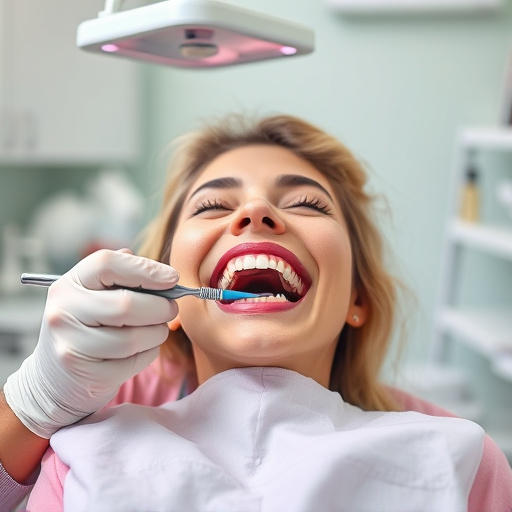A preventive dentistry program uses structured check-ups, cleanings, education, and tailored plans to proactively maintain oral health by catching issues early, reducing need for restorative treatments, and enhancing overall well-being. Key components include regular patient check-ins, comprehensive exams with technology like digital X-rays, follow-up sessions for hygiene management, and ongoing assessment of dental implant healing. Consistent monitoring prevents escalation of oral health issues, with benefits like early detection of decay or gum disease; challenges include time constraints and patient motivation.
“In today’s digital era, a Preventive Dentistry Program with consistent monitoring is transforming oral health care. This article delves into the essence of such programs, exploring their critical components for optimal effectiveness. From understanding the foundational principles of preventive dentistry to dissecting the benefits and challenges of regular monitoring, this comprehensive guide highlights strategies for maintaining robust dental health. Embrace a proactive approach to oral care with our insights on creating a successful, monitored program.”
- Understanding Preventive Dentistry Programs
- Components of an Effective Monitoring System
- Benefits and Challenges of Consistent Monitoring
Understanding Preventive Dentistry Programs
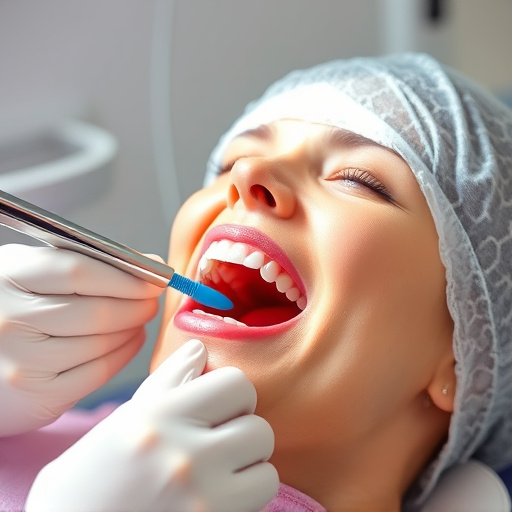
A preventive dentistry program is a structured approach designed to maintain oral health and forestall dental issues before they arise or require extensive tooth repair. This proactive strategy involves regular check-ups, cleanings, and patient education, focusing on both adult and children’s dentistry. By catching potential problems early, such as plaque buildup or tooth decay, dental professionals can provide appropriate interventions to prevent the need for more invasive restorative dentistry procedures down the line.
These programs are tailored to individual needs, taking into consideration factors like diet, oral hygiene habits, and genetic predispositions. Through consistent monitoring, dental teams can identify risk factors and create customized plans that promote better oral health. This holistic approach not only saves patients from costly and extensive treatments but also enhances overall well-being by connecting oral health with systemic health.
Components of an Effective Monitoring System

An effective monitoring system for a preventive dentistry program should include several key components. First and foremost, regular check-ins with patients are essential to track their oral health progress. These visits should involve comprehensive dental examinations, where dentists can identify any early signs of decay, gum disease, or other issues. Utilizing modern technology like digital X-rays and advanced imaging can significantly enhance the accuracy and efficiency of these assessments.
Additionally, a robust monitoring system should incorporate patient education and feedback mechanisms. Providing clear aligners or restorative dentistry treatments as part of the program benefits from regular follow-up sessions to ensure proper oral hygiene and adherence to care plans. Similarly, for patients considering dental implants, ongoing monitoring allows dentists to assess healing and integration, ensuring optimal long-term results. This holistic approach ensures that the preventive dentistry program remains tailored to individual needs, fostering better oral health outcomes.
Benefits and Challenges of Consistent Monitoring
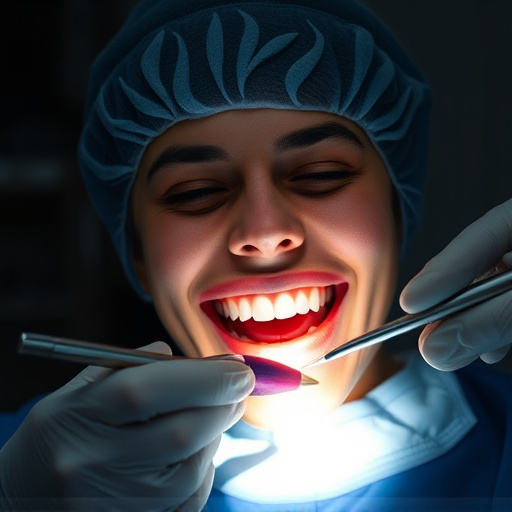
Consistent monitoring is a vital component of any effective preventive dentistry program. By regularly checking patients’ oral health, dentists can identify potential issues early on and take proactive measures to prevent them from becoming more serious problems. This approach not only saves time and money in the long run but also significantly improves overall dental health outcomes. For example, regular check-ups can help catch tooth decay or gum disease before they require extensive treatments like dental implants.
While consistent monitoring offers numerous benefits, it also presents certain challenges. Time constraints often limit dentists’ ability to schedule frequent appointments, especially in busy practices. Additionally, some patients may not fully grasp the importance of preventive care and may be less motivated to adhere to recommended oral hygiene routines at home. Addressing these challenges requires a multifaceted approach, including efficient practice management strategies, patient education, and leveraging modern technology for remote monitoring where applicable. Incorporating these solutions into a comprehensive preventive dentistry program ensures that both children’s dentistry and family dentistry services are optimized for maximum effectiveness.
Implementing a comprehensive preventive dentistry program with consistent monitoring can significantly improve oral health outcomes. By incorporating regular check-ups, educational initiatives, and tailored care, dental professionals can empower patients to maintain healthy smiles. Effective monitoring systems, involving advanced technologies and personalized follow-ups, ensure that potential issues are identified early, enhancing treatment efficacy. While challenges exist, such as patient compliance and resource allocation, the benefits of consistent monitoring in preventive dentistry far outweigh the obstacles, ultimately fostering a culture of proactive oral care.








